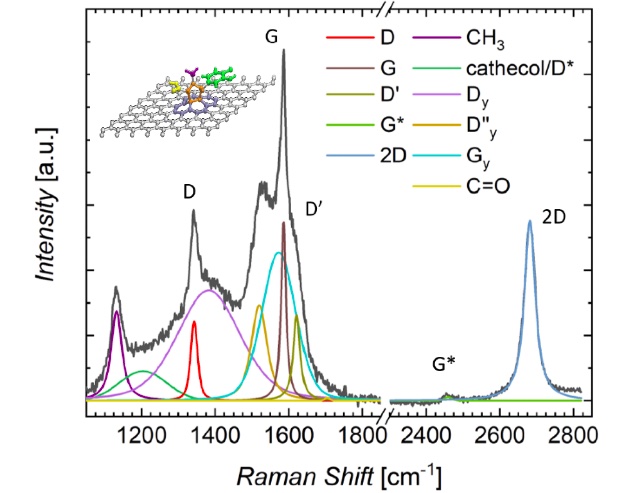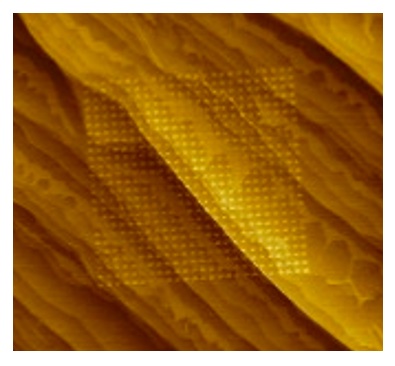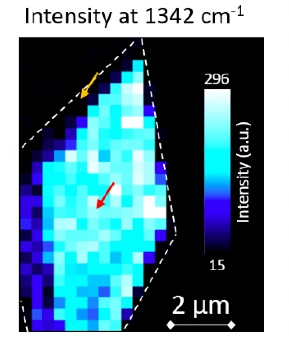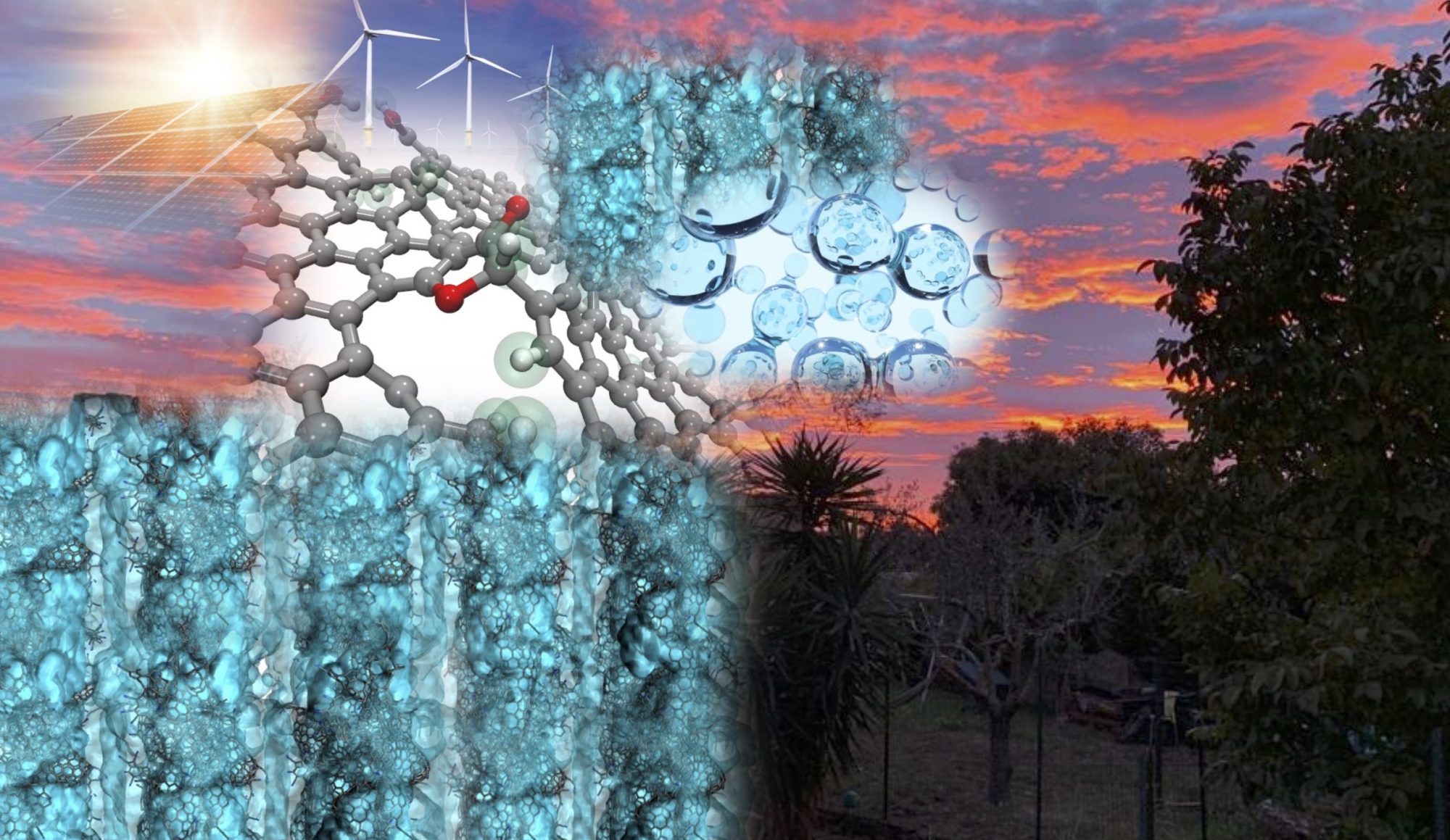


Due to the absence of a bandgap, the use of graphene as an active element in electronic devices and sensors encounters limitations. To overcome these limitations, the functionalization of graphene offers the possibility to finely tune its physical and chemical properties, resulting in a synergistic combination of the individual features of each component. In particular, the organic functionalization of graphene represents a flexible tool to tailor its properties. For both hydrogen permeation and storage, proper functional groups able to bind hydrogen can be grafted on the organic backbone, allowing the functional molecule also to act as a spacer between stacked graphene layers.
A commonly diffuse approach to the functionalization of graphene, the use of diazonium salts, leads to an abundant and quick functionalization, but it is hard to control. On the other hand, 1,3-dipolar cycloaddition (1,3-DC) is a more selective and controlled method and has been shown as very promising. We have successfully functionalized graphene via 1,3-DC of azomethine ylide, as demonstrated by the Raman signature arising from the functionalization, which was assigned with the help of DFT simulations of the vibrational power spectrum of functionalized graphene (see Fig. 1). Moreover, a spatially controlled (⁓ 100 nm) organic functionalization of monolayer graphene is successfully achieved by combining low energy electron beam irradiation (EBI) with 1,3-DC. Indeed, the modification of the graphene honeycomb lattice obtained via EBI yields to a local increase of the chemical reactivity of graphene. Therefore, the functionalization pattern can be designed on the graphene surface in a well-controlled way (see Fig. 2).
The Raman signature highlights the selective functionalization, which is present in the EBI modified area only (see Fig. 3). These results open the route for a wider range of applications, such as electrochemical devices for gas sensing or storage, enzymatic essays, catalysis, or protein interaction.
For more details, see http://web.nano.cnr.it/heun/research/graphene/.
| People | Stefano Veronesi*, Stefan Heun, Ylea Vlamidis |
| Keywords | Hydrogen storage, graphene, organic functionalization, sensing |
| Methods, techniques | STM, LEED, TDS, Raman spectroscopy, XPS. |
| Publications | |
| L. Basta, A. Moscardini, F. Fabbri, L. Bellucci, V. Tozzini, S. Rubini, A. Griesi, M. Gemmi, S. Heun, S. Veronesi, Covalent organic functionalization of graphene nanosheets and reduced graphene oxide via 1, 3-dipolar cycloaddition of azomethine ylide Nanoscale Advances 2021 | |
| L. Basta, A. Moscardini, S. Veronesi, F. Bianco, Substrate surface effects on electron-irradiated graphene, Surf Interf 2022 | |
| Luca Basta, Federica Bianco, Aldo Moscardini, Filippo Fabbri, Luca Bellucci, Valentina Tozzini, Stefan Heun, Stefano Veronesi, Deterministic Covalent Organic Functionalization of Monolayer Graphene with 1,3-Dipolar Cycloaddition Via High Resolution Surface Engineering, arXiv:2202.06609 [cond-mat.mtrl-sci] 2022 |

